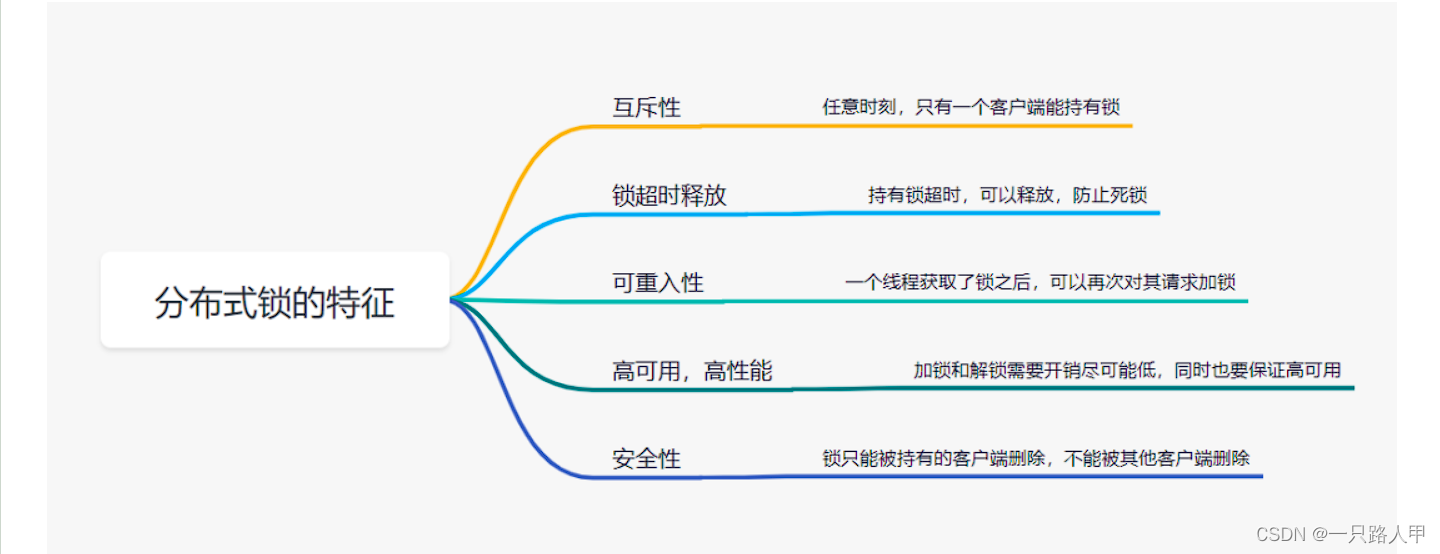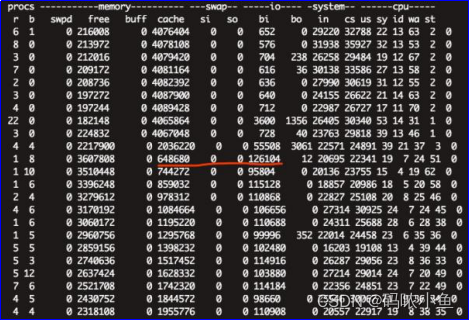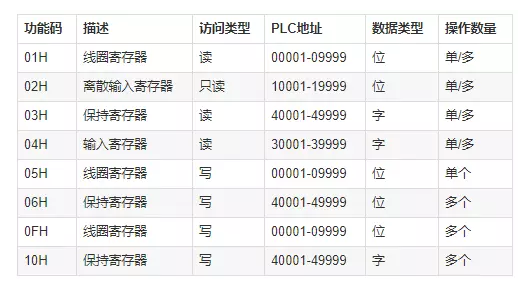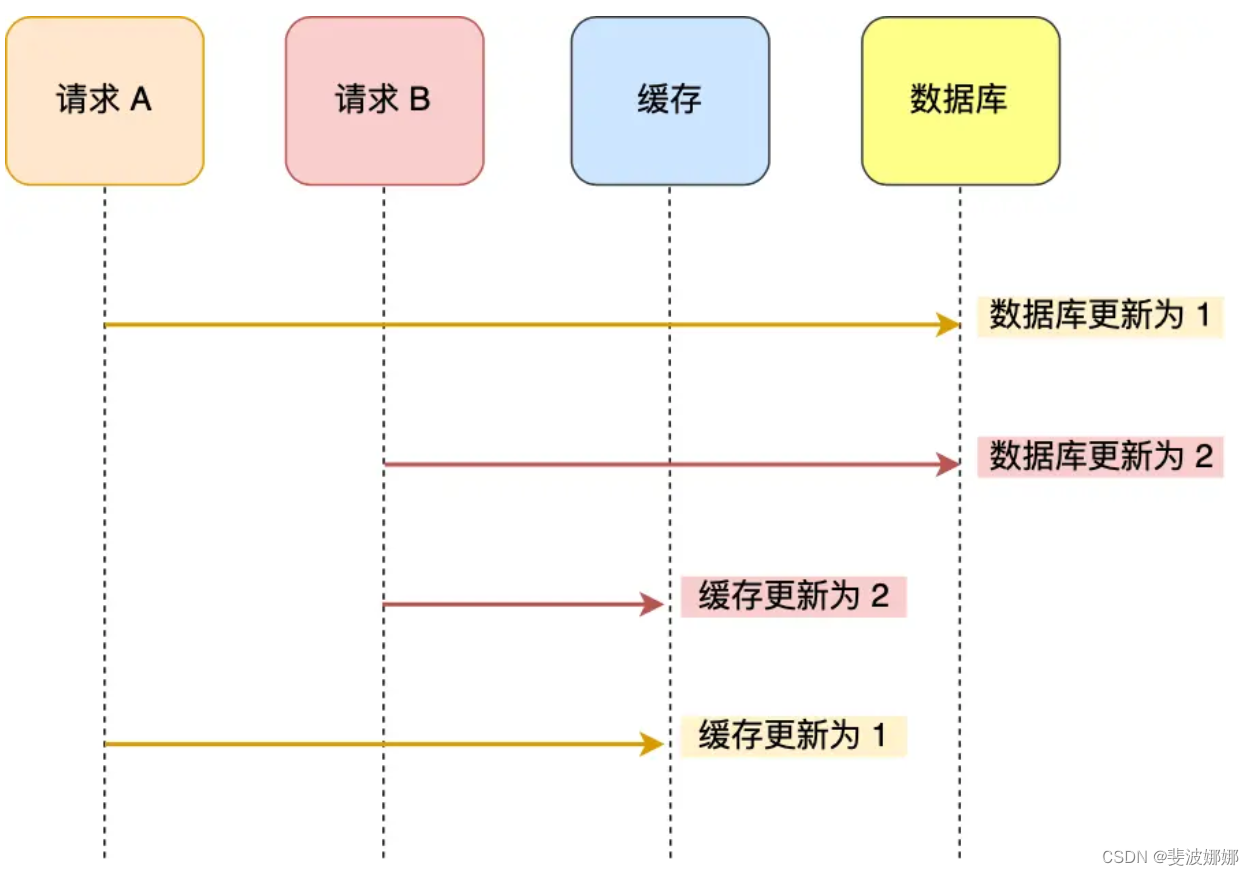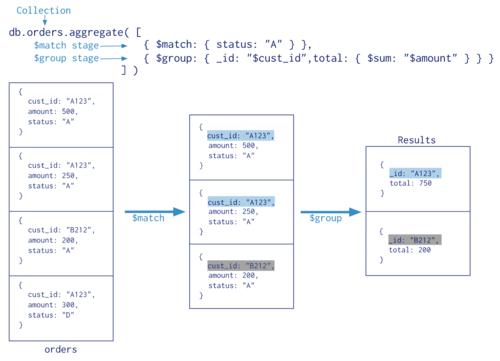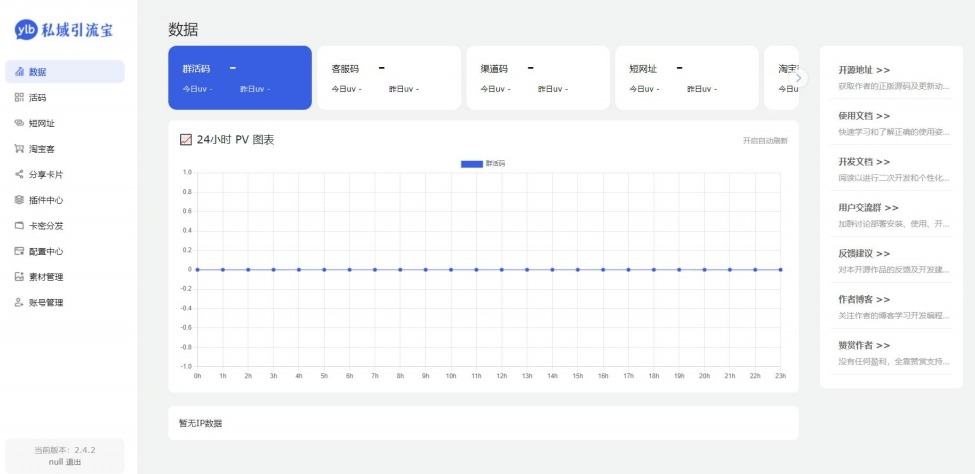一、概述
1、SpringCache是Spring提供的一个缓存框架,在Spring3.1版本开始支持将缓存添加到现有的spring应用程序中,在4.1开始,缓存已支持JSR-107注释和更多自定义的选项。

2、SpringCache利用了AOP,实现了基于注解的缓存功能,只需要简单地加一个注解,就能实现缓存功能了,做到了对代码侵入性做小。
3、SpringCache框架还提供了CacheManager接口,可以实现降低对各种缓存框架的耦合。它不是具体的缓存实现,它只提供一整套的接口和代码规范、配置、注解等,用于整合各种缓存方案,比如Caffeine、Guava Cache、Ehcache。
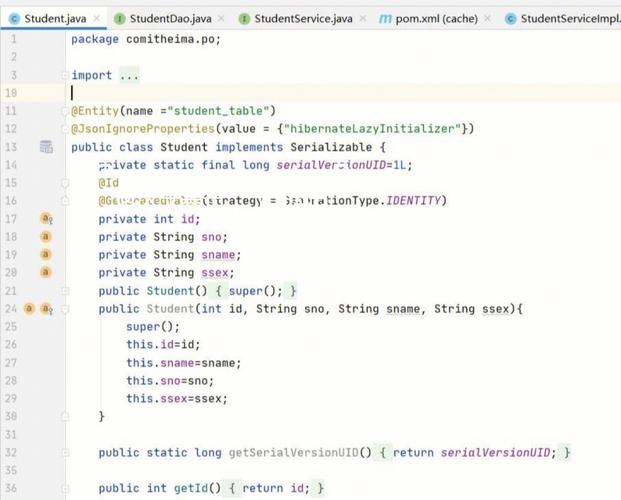
二、SpringCache概念
接口:
1、Cache接口:缓存接口,定义缓存操作。实现有 如RedisCache、EhCacheCache、ConcurrentMapCache等
2、cacheResolver:指定获取解析器
3、CacheManager:缓存管理器,管理各种缓存(Cache)组件;如:RedisCacheManager,使用redis作为缓存。指定缓存管理器
注解:
1- @Cacheable:在方法执行前查看是否有缓存对应的数据,如果有直接返回数据,如果没有调用方法获取数据返回,并缓存起来。
2- @CacheEvict:将一条或多条数据从缓存中删除。
3- @CachePut:将方法的返回值放到缓存中
4- @EnableCaching:开启缓存注解功能
5- @Caching:组合多个缓存注解;
6- @CacheConfig:统一配置@Cacheable中的value值
三、spring缓存整合redis
RedisConfig 类路径: com.ruoyi.framework.config.RedisConfig
1- spring 自动管理缓存机制
@EnableCaching //开启spring缓存,提升性能
@Slf4j
@Configuration
@EnableCaching //1- spring 自动管理缓存机制 ,,提升性能
@EnableConfigurationProperties(RedissonProperties.class)
public class RedisConfig {
2- 整合自定义缓存管理器
/**
* 2-自定义缓存管理器 整合spring-cache
*/
@Bean
public CacheManager cacheManager() {
return new PlusSpringCacheManager();
}
自定义 管理器:PlusSpringCacheManager,实现CacheManager 接口,基于redssion操作缓存
/**
* Copyright (c) 2013-2021 Nikita Koksharov
*
* Licensed under the Apache License, Version 2.0 (the "License");
* you may not use this file except in compliance with the License.
* You may obtain a copy of the License at
*
* http://www.apache.org/licenses/LICENSE-2.0
*
* Unless required by applicable law or agreed to in writing, software
* distributed under the License is distributed on an "AS IS" BASIS,
* WITHOUT WARRANTIES OR CONDITIONS OF ANY KIND, either express or implied.
* See the License for the specific language governing permissions and
* limitations under the License.
*/
package com.ruoyi.framework.manager;
import com.ruoyi.common.utils.redis.RedisUtils;
import org.redisson.api.RMap;
import org.redisson.api.RMapCache;
import org.redisson.spring.cache.CacheConfig;
import org.redisson.spring.cache.RedissonCache;
import org.springframework.boot.convert.DurationStyle;
import org.springframework.cache.Cache;
import org.springframework.cache.CacheManager;
import org.springframework.cache.transaction.TransactionAwareCacheDecorator;
import org.springframework.util.StringUtils;
import java.util.Collection;
import java.util.Collections;
import java.util.Map;
import java.util.concurrent.ConcurrentHashMap;
import java.util.concurrent.ConcurrentMap;
/**
* A {@link org.springframework.cache.CacheManager} implementation
* backed by Redisson instance.
*
* 修改 RedissonSpringCacheManager 源码
* 重写 cacheName 处理方法 支持多参数
*
* @author Nikita Koksharov
*
*/
@SuppressWarnings("unchecked")
public class PlusSpringCacheManager implements CacheManager {
//是否自动配置name
private boolean dynamic = true;
//是否允许null
private boolean allowNullValues = true;
//事务提交之后执行
private boolean transactionAware = true;
// 常用缓存配置 ttl; maxIdleTime; maxSize; 等
Map configMap = new ConcurrentHashMap();
// 缓存实例
ConcurrentMap instanceMap = new ConcurrentHashMap();
/**
* Creates CacheManager supplied by Redisson instance
*/
public PlusSpringCacheManager() {
}
/**
* Defines possibility of storing {@code null} values.
*
* Default is true
*
* @param allowNullValues stores if true
*/
public void setAllowNullValues(boolean allowNullValues) {
this.allowNullValues = allowNullValues;
}
/**
* Defines if cache aware of Spring-managed transactions.
* If {@code true} put/evict operations are executed only for successful transaction in after-commit phase.
*
* Default is false
*
* @param transactionAware cache is transaction aware if true
*/
public void setTransactionAware(boolean transactionAware) {
this.transactionAware = transactionAware;
}
/**
* Defines 'fixed' cache names.
* A new cache instance will not be created in dynamic for non-defined names.
*
* `null` parameter setups dynamic mode
*
* @param names of caches
*/
public void setCacheNames(Collection names) {
if (names != null) {
for (String name : names) {
getCache(name);
}
dynamic = false;
} else {
dynamic = true;
}
}
/**
* Set cache config mapped by cache name
*
* @param config object
*/
public void setConfig(Map config) {
this.configMap = (Map) config;
}
protected CacheConfig createDefaultConfig() {
return new CacheConfig();
}
@Override
public Cache getCache(String name) {
// 重写 cacheName 支持多参数
/**
* 演示案例 : String DEMO_CACHE = "demo:cache#60s#10m#20";
*/
String[] array = StringUtils.delimitedListToStringArray(name, "#");
name = array[0];
Cache cache = instanceMap.get(name);
if (cache != null) {
return cache;
}
//2- dynamic=false 不会动态生成
if (!dynamic) {
//return cache;
return null;
}
CacheConfig config = configMap.get(name);
if (config == null) {
config = createDefaultConfig();
configMap.put(name, config);
}
//setTTL
if (array.length > 1) {
config.setTTL(DurationStyle.detectAndParse(array[1]).toMillis());
}
//setMaxIdleTime
if (array.length > 2) {
config.setMaxIdleTime(DurationStyle.detectAndParse(array[2]).toMillis());
}
//setMaxSize
if (array.length > 3) {
config.setMaxSize(Integer.parseInt(array[3]));
}
if (config.getMaxIdleTime() == 0 && config.getTTL() == 0 && config.getMaxSize() == 0) {
return createMap(name, config);
}
return createMapCache(name, config);
}
private Cache createMap(String name, CacheConfig config) {
//1-获取缓存
RMap map = RedisUtils.getClient().getMap(name);
//2-没有过期时间传2个参数
Cache cache = new RedissonCache(map, allowNullValues);
// 3-事务提交 之后执行
if (transactionAware) {
cache = new TransactionAwareCacheDecorator(cache);
}
//4-不存在就添加
Cache oldCache = instanceMap.putIfAbsent(name, cache);
if (oldCache != null) {
cache = oldCache;
}
return cache;
}
private Cache createMapCache(String name, CacheConfig config) {
//1-获取缓存
RMapCache map = RedisUtils.getClient().getMapCache(name);
//2-有过期时间传3个参数 ,config 里面有 ttl、maxIdleTime、maxSize
Cache cache = new RedissonCache(map, config, allowNullValues);
// 3-事务提交 之后执行
if (transactionAware) {
cache = new TransactionAwareCacheDecorator(cache);
}
//4-不存在就添加
Cache oldCache = instanceMap.putIfAbsent(name, cache);
if (oldCache != null) {
cache = oldCache;
} else {
map.setMaxSize(config.getMaxSize());
}
return cache;
}
//返回不可修改的集合
@Override
public Collection getCacheNames() {
return Collections.unmodifiableSet(configMap.keySet());
}
}
3-@Cacheable
以下Cacheable几个属性分别演示了如何使用:(支持SPEL表达式)
- cacheNames
- key
- sync
- condition
- sync
/** * cacheNames: 指定名称 可以是数组 * key: 支持spel表达式,可以获取参数 * @author syf * @date 2024/5/7 11:03 * @param id * @param pageQuery * @return java.lang.String */ @Cacheable(cacheNames = "cache1", key = "#id + '_cache' + #pageQuery.pageNum") @GetMapping("test1") public String test1(String id, PageQuery pageQuery){ return "ok"; } /** * condition :符合条件进行缓存 * #id != null :表示传入 id不为空才会缓存进入redis,id为空则不缓存 * @author syf * @date 2024/5/7 11:03 * @param id * @return java.lang.String */ @Cacheable(cacheNames = "cache2", key = "#id + '_cache'" , condition = "#id != null") @GetMapping("test2") public String test2(String id){ return "ok"; } /** * unless 符合条件不缓存 * #result == null :接口返回结果为空则不进行缓存 * @author syf * @date 2024/5/7 11:03 * @param id * @return java.lang.String */ @Cacheable(cacheNames = "cache3", key = "#id + '_cache'" , unless = "#result == null") @GetMapping("test3") public String test3(String id){ return null; } /** * sync = true * 同步阻塞:同时进来多个请求, 等待前面调用返回并缓存,才能回进入下个请求 * 作用:防止缓存积存 * @author syf * @date 2024/5/7 11:03 * @param id * @return java.lang.String */ @Cacheable(cacheNames = "cache4", key = "#id + '_cache'", sync = true) @GetMapping("test4") public String test4(String id){ return null; } /** * 获取类中参数 * 比较繁琐,一般是在实现类中传递登录参数,用spel获取 * @author syf * @date 2024/5/7 11:03 * @return java.lang.String */ @Cacheable(cacheNames = "cache5", key = "T(com.ruoyi.common.helper.LoginHelper).getLoginUser().getLoginId()") @GetMapping("test5") public String test5(){ LoginUser loginUser = LoginHelper.getLoginUser(); return "ok"; }4- @CachePut
缓存更新
执行该方法,并将执行结果以键值对的形式存入指定的缓存中。
/** * 结果不为空进行更新 * @author syf * @date 2024/5/7 11:03 * @param id * @return java.lang.String */ @CachePut(cacheNames = "cache2", key = "#id + '_cache'" , condition = "#result != null") @GetMapping("test2") public String test2(String id){ boolean flag = doUpdate(); return flag ? "ok" : null; }5- @CacheEvict
缓存删除
执行该方法,并将缓存中结果删除。
allEntries 删除所有cacheNames = "cache4",下面缓存
beforeInvocation 默认false,方法执行之后有异常不执行。true:方法执行之后有异常,也执行
/** * 删除缓存 * @author syf * @date 2024/5/7 11:03 * @param id * @return java.lang.String */ @CacheEvict(cacheNames = "cache4", key = "#id + '_cache'") @GetMapping("test7") public String test7(String id){ boolean flag = doDelete(); return flag ? "ok" : null; } /** * 删除所有缓存 * @author syf * @date 2024/5/7 11:03 * @param id * @return java.lang.String */ @CacheEvict(cacheNames = "cache4", allEntries = true) @GetMapping("test8") public String test8(String id){ return null; } /** * beforeInvocation 无论是否有异常都执行操作 * @author syf * @date 2024/5/7 11:03 * @param id * @return java.lang.String */ @CacheEvict(cacheNames = "cache4", beforeInvocation = true) @GetMapping("test9") public String test9(String id){ return null; }6-@Caching:
指定多个Spring Cache相关的注解
三个属性:cacheable、put和evict,分别用于指定@Cacheable、@CachePut和@CacheEvict。
@Caching( cacheable = {@Cacheable(value = "uer1",key = "#userName")}, put = {@CachePut(value = "uer1", key = "#result.id"), @CachePut(value = "uer1", key = "#result.age") } ) public User getStuByStr(String userName) { List users= listMapper.selectByList(studentExample); return Optional.ofNullable(users).orElse(null).get(0); }四、若依框架中缓存使用(自定义SpringCache 源码解读)
CacheNames 常量设置规则:
key 格式为: cacheNames#ttl#maxIdleTime#maxSize /** * 缓存组名称常量 *
* key 格式为 cacheNames#ttl#maxIdleTime#maxSize *
* ttl 过期时间 如果设置为0则不过期 默认为0 * maxIdleTime 最大空闲时间 根据LRU算法清理空闲数据 如果设置为0则不检测 默认为0 (超过maxIdleTime LRU算法自动清理) * maxSize 组最大长度 根据LRU算法清理溢出数据 如果设置为0则无限长 默认为0 *
* 例子: test#60s、test#0#60s、test#0#1m#1000、test#1h#0#500 * * @author Lion Li */
PlusSpringCacheManager 实现 CacheManager 接口,重写 getCache 方法,
就是配置了 :ttl、maxIdleTime、maxSize 三个参数吗,如下:
@Override public Cache getCache(String name) { // 重写 cacheName 支持多参数 /** * 1-演示案例 : String DEMO_CACHE = "demo:cache#60s#10m#20"; */ String[] array = StringUtils.delimitedListToStringArray(name, "#"); name = array[0]; Cache cache = instanceMap.get(name); if (cache != null) { return cache; } //2- dynamic=false 不会动态生成 if (!dynamic) { //return cache; return null; } CacheConfig config = configMap.get(name); if (config == null) { config = createDefaultConfig(); configMap.put(name, config); } //setTTL if (array.length > 1) { config.setTTL(DurationStyle.detectAndParse(array[1]).toMillis()); } //setMaxIdleTime if (array.length > 2) { config.setMaxIdleTime(DurationStyle.detectAndParse(array[2]).toMillis()); } //setMaxSize if (array.length > 3) { config.setMaxSize(Integer.parseInt(array[3])); } if (config.getMaxIdleTime() == 0 && config.getTTL() == 0 && config.getMaxSize() == 0) { return createMap(name, config); } return createMapCache(name, config); }重点:下面就是PlusSpringCacheManager ,操作缓存的地方
上面调用了:createMap、createMapCache 2个方法对比:
1-逻辑:
createMapCache 多了个 setMaxSize判断,其他都一样
else { map.setMaxSize(config.getMaxSize()); }2- 返回类型
createMap 返回 RMap
createMapCache 返回 RMapCache
对比: RMapCache 继承了 RMap 多了对于ttl、maxIdleTime、maxSize 的配置
相同 :都是基于redisson,缓存到redis
private Cache createMap(String name, CacheConfig config) { //1-获取缓存 RMap map = RedisUtils.getClient().getMap(name); //2-没有过期时间传2个参数 Cache cache = new RedissonCache(map, allowNullValues); // 3-事务提交 之后执行 if (transactionAware) { cache = new TransactionAwareCacheDecorator(cache); } //4-不存在就添加 Cache oldCache = instanceMap.putIfAbsent(name, cache); if (oldCache != null) { cache = oldCache; } return cache; } private Cache createMapCache(String name, CacheConfig config) { //1-获取缓存 RMapCache map = RedisUtils.getClient().getMapCache(name); //2-有过期时间传3个参数 ,config 里面有 ttl、maxIdleTime、maxSize Cache cache = new RedissonCache(map, config, allowNullValues); // 3-事务提交 之后执行 if (transactionAware) { cache = new TransactionAwareCacheDecorator(cache); } //4-不存在就添加 Cache oldCache = instanceMap.putIfAbsent(name, cache); if (oldCache != null) { cache = oldCache; } else { map.setMaxSize(config.getMaxSize()); } return cache; }上面 TransactionAwareCacheDecorator:
所执行的put操作,是在事务提交之后执行
public void put(final Object key, @Nullable final Object value) { if (TransactionSynchronizationManager.isSynchronizationActive()) { TransactionSynchronizationManager.registerSynchronization(new TransactionSynchronization() { public void afterCommit() { TransactionAwareCacheDecorator.this.targetCache.put(key, value); } }); } else { this.targetCache.put(key, value); } }五、缓存工具类
private static final CacheManager CACHE_MANAGER = SpringUtils.getBean(CacheManager.class); 主要是获取 CacheManager 接口,提供对缓存CRUD操作 :
public interface CacheManager { @Nullable Cache getCache(String name); Collection getCacheNames(); }package com.ruoyi.common.utils.redis; import com.ruoyi.common.utils.spring.SpringUtils; import lombok.AccessLevel; import lombok.NoArgsConstructor; import org.redisson.api.RMap; import org.springframework.cache.Cache; import org.springframework.cache.CacheManager; import java.util.Set; /** * 缓存操作工具类 {@link } * * @author Michelle.Chung * @date 2022/8/13 */ @NoArgsConstructor(access = AccessLevel.PRIVATE) @SuppressWarnings(value = {"unchecked"}) public class CacheUtils { private static final CacheManager CACHE_MANAGER = SpringUtils.getBean(CacheManager.class); /** * 获取缓存组内所有的KEY * * @param cacheNames 缓存组名称 */ public static Set keys(String cacheNames) { RMap rmap = (RMap) CACHE_MANAGER.getCache(cacheNames).getNativeCache(); return rmap.keySet(); } /** * 获取缓存值 * * @param cacheNames 缓存组名称 * @param key 缓存key */ public static T get(String cacheNames, Object key) { Cache.ValueWrapper wrapper = CACHE_MANAGER.getCache(cacheNames).get(key); return wrapper != null ? (T) wrapper.get() : null; } /** * 保存缓存值 * * @param cacheNames 缓存组名称 * @param key 缓存key * @param value 缓存值 */ public static void put(String cacheNames, Object key, Object value) { CACHE_MANAGER.getCache(cacheNames).put(key, value); } /** * 删除缓存值 * * @param cacheNames 缓存组名称 * @param key 缓存key */ public static void evict(String cacheNames, Object key) { CACHE_MANAGER.getCache(cacheNames).evict(key); } /** * 清空缓存值 * * @param cacheNames 缓存组名称 */ public static void clear(String cacheNames) { CACHE_MANAGER.getCache(cacheNames).clear(); } }


